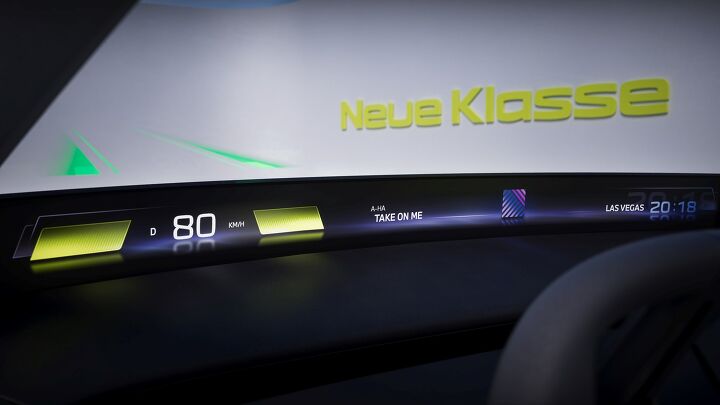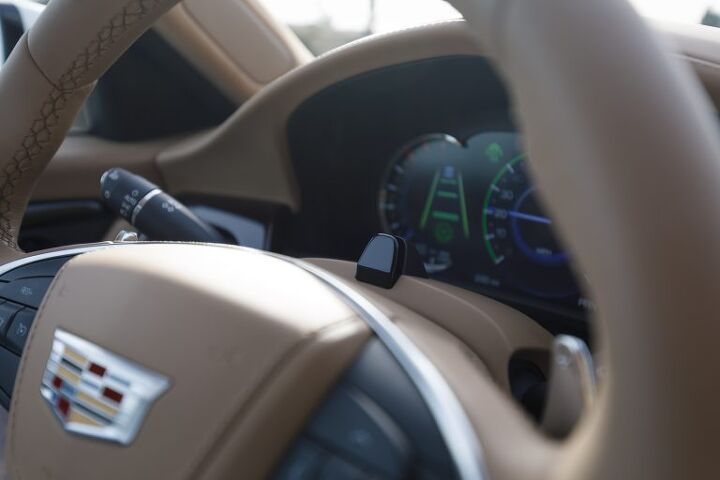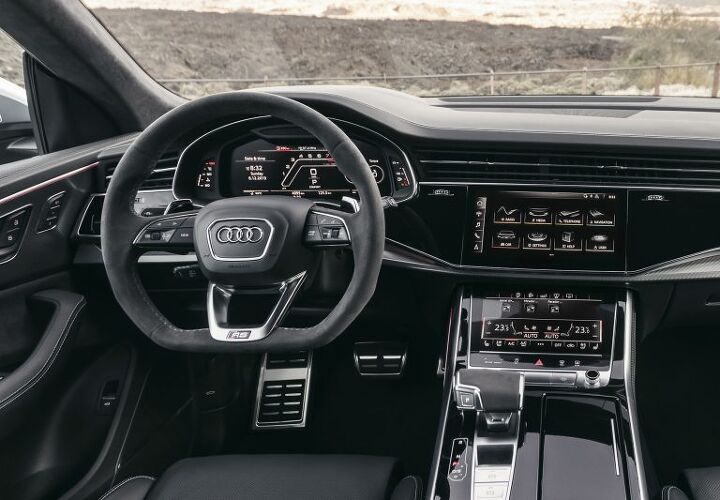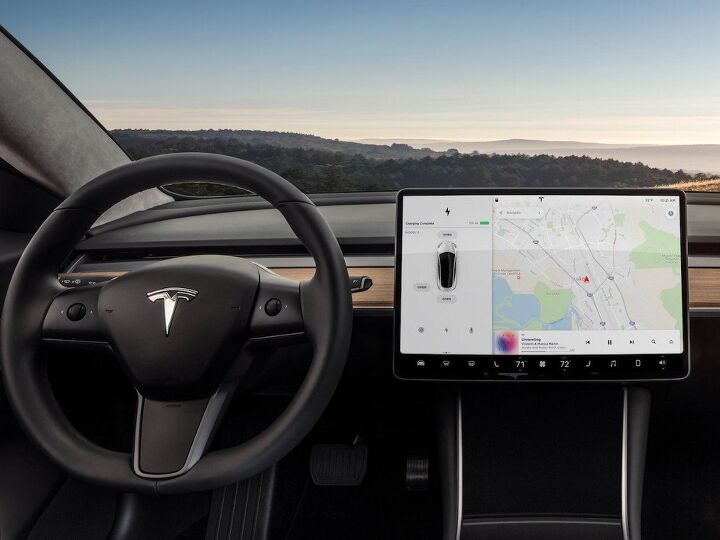#DistractedDriving
BMW Boss: Big Screens To Be Replaced By Big HUDs
Automotive technology is developing at a dizzying pace, but that rapid progress has created quite a few side effects along the way. Take screens, for example. It’s illegal to even hold a cell phone while driving in many states, yet there’s a large screen on the dash of almost every new car today – sometimes more than one. BMW’s board chair has thoughts on the issue and believes we’ll see a big shift in how screens are used in the next few years.
AAA Endorses Driver-Monitoring Camera Systems
Despite the automotive industry collectively promising to commence deliveries of self-driving cars in 2019, autonomous vehicles have remained test platforms for technologies that don’t yet seem ready for mass consumption. Public perception of the concept has also endured a few setbacks after several fatalities involving partially autonomous vehicles received national media attention. Today, the relevant technologies have failed to mature as swiftly as indicated and there are a whole host of legal ramifications to contend with.
Selling an automobile that’s marketed as being able to drive itself (even partially) are exposing automakers to a whole new demographic of lawsuits, so they’re desperate to install failsafe measures that places the onus of responsibility back onto the driver. Their current favorite is driver-monitoring cameras, which the American Automobile Association (AAA) likewise believes are probably the best solution. The outlet recently shared the results of a study attempting to determine which driver-engagement systems worked best and decided that in-cabin cameras were the leading choice in a batch of bad options.
IIHS Takes a Dump on Semi-Autonomous Cars, Then Impositions Drivers
The Insurance Institute for Highway Safety (IIHS) has said it is developing a new rating system to evaluate the existing safeguards found inside vehicles equipped with partial automation. Considering how commonplace advanced driving aids have become, you might be thinking this was long overdue. However, insurers were blindly praising advanced driving suites a few years ago — until they actually started testing them in earnest.
As luck would have it, there’s been mounting research supporting claims modern automotive tech encourages drivers to tune out and become distracted. While this wouldn’t be a big deal if the relevant features all functioned perfectly, the reality is that most are far less effective than advertised and practically all of them run the risk of being completely undone by inclement weather or poor lighting. Confusingly, the IIHS believes the best solution here is to make sure systems constantly monitor the driver to ensure the driver is constantly monitoring the system.
Lexus Makes a Point About Distracted Driving
Last week, Lexus launched a viral marketing campaign — that also makes for an excellent public service announcement — about how stupid it is to check your phone while driving. But it has only just started getting the kind of attention it deserves, now that some of the contentious regulatory news has subsided.
The automaker modified a Lexus NX crossover with an electrochromic film that can totally obfuscate the glass for 4.6 seconds — which is the average length of time a person looks at their phone while driving, according to the National Highway Traffic Safety Administration (NHTSA). It then invited people to take the car for a “test drive” while it made a point about distracted driving. While an overt publicity stunt, it was rather effective and addresses one of our biggest concerns in terms of automotive safety. Lexus simply showcased a bunch of morons with phones in an interesting way, highlighted the danger, and then got off its podium.
IIHS Study Underlines the Perils of Driver Disengagement
It turns out there’s a name for the false sense of security provided by modern driving aids. According to researchers with the Insurance Institute for Highway Safety (IIHS) and the Massachusetts Institute of Technology’s AgeLab, the phenomenon is called “driver disengagement” and it’s assumed to be a contributing factor to roadways fatalities. The duo recently published a rather basic study examining how evolving automotive technologies might be eroding safety under the guise of progress.
Since we’ve been onto the perils and shortcomings of advanced driving aids since their introduction, it also provides us with another stellar opportunity to gloat. Heck, our criticisms go back far enough to predate any reputable research on the matter. We were just bitter cranks then, annoyed that the systems seemed unworthy of our trust despite constantly demanding it. But the IIHS said its latest testing found motorists frequently lose focus while utilizing features like adaptive cruise control and lane-keeping. This issue reportedly worsens the more familiar drivers become with the systems, which would be fine if they could be counted on for total effectiveness. Sadly, there’s been more than enough testing for us to know that’s not the case.
Report: Audi Wants to Ditch Interior Buttons, Free up More Screen Space
With Cadillac torpedoing any hope we had that the touchscreen trend might come to swift end, we started digging around to see the latest and greatest interior screen experiences automakers are hoping to push onto the market. The worst offenders cropped up in concept vehicles, though most automakers aspire to equip future models with more screen space than you’ll know what do with — see China’s Byton for an example.
As for less speculative specimens, Audi had us covered. The brand’s MMI Touch Response infotainment system sacrifices physical controls for three rather large interactive displays. Limited to higher-end models (A6, A7, A8, and Q8), MMI groups a 12.3-inch digital gauge cluster, 10.3-inch central console, and a smaller 8.6-inch display for controlling the HVAC system. Apparently, that’s the interior Audi wants to run with for all future vehicles while it works up something new.
Australia Introduces Phone Detection Cameras for Roads
Australia put up the first phone-detecting cameras in New South Wales over the weekend. The move is part of a broader plan to reduce roadway fatalities by 30 percent by 2021 — especially as new technologies continue to exacerbate the issue of distracted driving. “It’s a system to change the culture,” NSW Police Assistant Commissioner Michael Corboy told Australian media las week.
There’s nothing incredibly new about the cameras themselves. But they’re networked to an artificial intelligence that determines whether or not someone behind the wheel is using their phone. Suspect images are then forwarded to authorized personnel to be verified as truly criminal.
Cops Hot on the Trail of Interstate Smut Merchants
Distracted driving is one the greatest scourges of our time, rivalling drunk driving as the roadgoing activity most likely to end in tragedy. Cell phones calls, texting, and cumbersome infotainment systems all contribute to a populace overwhelmed with distractions.
In light of this, the last thing any speeding driver needs is a massive roadside screen displaying a porno flick.
UK Cops Look to Crack Down on Distracted Drive-Thru Payments, Among Other Things
As part of its push to eliminate the scourge of distracted driving, the UK has given the country’s notoriously rigid police force a new tool to help eliminate road deaths: the ability to levy $256 fines and six penalty points to motorists paying via Apple Pay at the drive-thru.
Thanks to new laws that went into effect this spring, the police, some of which take great pride in ridding the country of tools that fell off an electrician’s belt, now have the power to turn that late-night McDouble run into a costly nightmare.
Insurance Companies Are Keeping Tabs on How Often You Use Your Phone Behind the Wheel
With mobile phones now a ubiquitous part of modern-day life, distracted driving has ballooned into a legitimate public safety problem. Alarming studies continue to pour in, with many claiming that driver cell phone use is likely underreported by authorities in crash reports. It’s hard to quantify, especially since nobody wants to admit that their moment of weakness may have contributed to an accident.
Add in a National Highway Traffic Safety Administration survey that found 30 percent of drivers aged 21 to 34 believe texting doesn’t negatively impact their driving, and you’d be forgiven for picking up your keys with sweaty palms.
A new study claims the issue has only gotten worse, with drivers spending more time on their phone than ever before. However, the way the data was acquired is disconcerting in itself. Insurance companies are tapping traffic data startups to monitor people’s phones, and they’re already capable of tracking millions of American devices.
Connecticut Driver Contends Alleged Cellphone Was McDonalds Hash Brown
(One of the above items is not like the other…)
Sometimes the most innocent actions can get you in trouble with the law, like the Maryland mother accused of using opiates because she ate a poppy seed bagel the morning she gave birth. A Connecticut man is challenging his conviction on a charge of distracted driving, claiming he was eating a McDonalds hash brown, not talking on his cellphone. No, this isn’t anything like Dan White’s supposed Twinkie Defense — the guy sounds like he has a legitimate case.
On April 11, 2018, Jason Stiber was pulled over in Westport. Westport PD Corporal Shawn Wong alleged that Stiber was talking on his cellphone while driving. Wong later told a magistrate that Stiber was holding a phone near his face and that his lips were moving. Stiber said the officer mistook his food for a phone. The magistrate apparently believed that Wong was right (sorry, I had to), and convicted Stiber of distracted driving, fining him $300.
Video: Tesla Model 3 Pulled Over For Having a 'Computer' Attached to the Dash
Saying the Tesla Model 3’s interior is polarizing would be a massive understatement. While some absolutely love the minimalist design and singular, tablet-like interface, others criticize it for being too barren to be considered interesting. The vehicle also saw some blowback over its centrally mounted 15-inch display, which, for several reasons, can serve as a potential distraction to drivers.
In fact, it’s so big that one Washington resident found himself pulled over by a motorcycle cop for having what was presumed to be a computer attached to his dashboard.
Safety Advocates Getting Testy Over Automotive Apps, Consumer Data
Automakers began hunting for new revenue streams about two milliseconds after realizing they could put the internet into vehicles. While the earliest endeavors involved ride-sharing applications and new infotainment features, companies are now beginning to see new opportunities via automotive e-commerce, data acquisition, and in-car marketing.
However, the delivery system used for these new sources of revenue pose a legitimate safety concern. Distracted driving is on the rise and shopping while behind the wheel isn’t likely to remedy the situation.
Isn't It Ironic: Chevrolet Launches Engaging Phone App Intended to Curb Distracted Driving
Chevrolet is releasing a new smartphone app, titled Call Me Out, to help remind motorists to keep their eyes on the road and put their phones in their pockets while driving. Of course, individuals will still have to check their phones to receive the messages, which seems a little counterintuitive.
While the automaker appears to target “new and experienced drivers,” there’s nothing to indicate the product wouldn’t work equally well for experienced operators. Call Me Out basically functions as a guilt delivery system, using a person’s family and friends for ammunition. Once the app has been installed, the phone’s accelerometer and GPS wait until the car surpasses 5 mph. Then the phone plays recorded, personalized messages from the driver’s loved ones, reminding drivers to keep driving and avoid distractions.
QOTD: Is It Offensive for a Funeral Home to Joke About Distracted Driving?
It’s odd how the same thing can make some people laugh and others feel offended. There are countless examples in a popular culture that cultivates a new outrage du jour practically every day. Even well-intended comments are seen as provocative. Hie thee to Twitter or Facebook for your regular fix of dopamine.
I was reminded of this while my siblings and I were making preparations for our mother’s recent funeral, may her memory be for a blessing. We were sitting in an office at the Hebrew Memorial Chapel, and along with guides and books on Jewish mourning practices, the funeral planner offered us some magnetic signs the chapel had made to discourage texting while driving, and also, I presume, to promote its services (it’s a non-profit community-based organization).


























Recent Comments